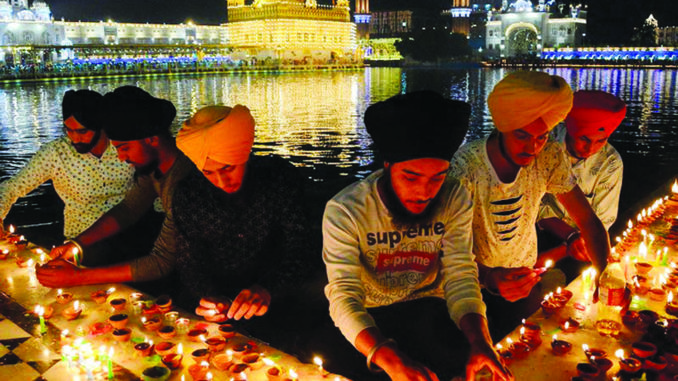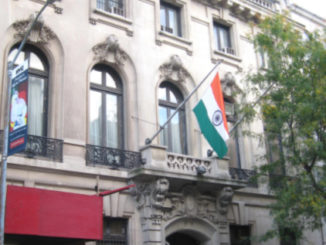
The day marks the release of Guru Hargobind, along with 52 Hill Princes held in captivity by the Mughal ruler in Gwalior, and his return to Shri Harimandir Sahib in Amritsar.
When Hindus and others celebrate Diwali, the festival of lights, Sikhs remember the release from prison and return to Amritsar of the sixth Guru, Guru Hargobind, in 1619. The name Bandi Chhor Divas means liberation of prisoners day.
According to tradition, Guru Hargobind was released from prison in Gwalior and reached Amritsar on Divali. He would only agree to leave prison if 52 Hindu princes who were in prison with him could also go free. The Emperor Jahangir, said that those who clung to the Guru’s coat would be able to go free. This was meant to limit the number of prisoners who could be released. However, Guru Hargobind had a coat made with 52 tassels attached to it so that all of the princes could leave prison with him.
The story reminds Sikhs of freedom and human rights and this is what they celebrate on Bandi Chhor Divas.
Bandi Chhor Divas also honors the martyrdom of Bhai Mani Singh who was executed in 1734 because of his refusal to pay religious meeting taxes.
GURU HARGOBIND’S DETENTION AND RELEASE
Because of envy and unfounded accusations from the emperor’s court member Chandu Shah, Jahangir ordered the torture and execution of Hargobind’s father Guru Arjan Dev. Hargobind inherited what his father left and tried to bring greatness to his city.
Guru Hargobind built the Sri Akal Takhat Sahib, “ The Throne of Almighty” and had also managed to strengthen his army. This became a warning signal for Murtaja Khan, Nawab of Lahore, who lied in his report to the emperor saying Hargobind was planning revenge for the death of his father. Upon hearing the report, Emperor Jahangir ordered the arrest of Hargobind through Wazir Khan and Guncha Beg.
But Wazir Khan was secretly a follower of the guru so instead of arresting him, he asked Hargobind to go visit the emperor. During the first meeting of Guru Hargobind and Emperor Jahangir, Jahangir was captivated by the purity and charm of the young guru.
The emperor asked the guru which religion was better, Hinduism or Islam. Jahangir was impressed with Hargobind’s answer, which was to recite lines from an Indian mystic and poet named Kabir, whose writing influenced Hinduism. In a hunting expedition, Guru Hargobind saved the life of Jahangir from a lion attack and this eventually started their friendship.
When Jahangir became very ill while staying at Agra, Chandu Shah who hated Arjan Dev and Hargobind, tricked the emperor by devising a plan to detain the young guru. Shah instructed the astrologers to tell the emperor he would only be healed if a holy man will go and stay at Gwalior Fort and continuously pray for him. Shah also suggested Hargobind was the only man fit for the task. The emperor asked Hargobind and complied with his request. Guru Hargobind discovered that Gwalior Fort wass a prison, but still he complied with the emperor’s request and prayed for Jahangir’s health accompanied by the noble prisoners. It was unclear as to how long the guru was detained but he made significant improvements in the prison because the fort’s governor was also his follower.
After some time, Guru Hargobind’s followers, headed by Baba Buddha, became concerned about his detainment and asked the now healed emperor for his release. It was Sufi saint Sai Mian Mir who brokered and convinced Emperor Jahangir to eventually release the guru from detention. But Guru Hargobind had one condition, he shall be released together with the Rajput princes in detention. Jahangir who was reluctant at first, but eventually agreed with the condition that only those who can handle his cloak or chola on his way out can be released. Intelligently, Guru Hargobind devised the tailoring of a heavy and long cloak which had 52 tails for each prisoner to hold on to. The guru, together with the 52 princes, was eventually released. Guru Hargobind returned to Amritsar on the day of Diwali, to a grand reception at Shri Harimandir Sahib.





Be the first to comment